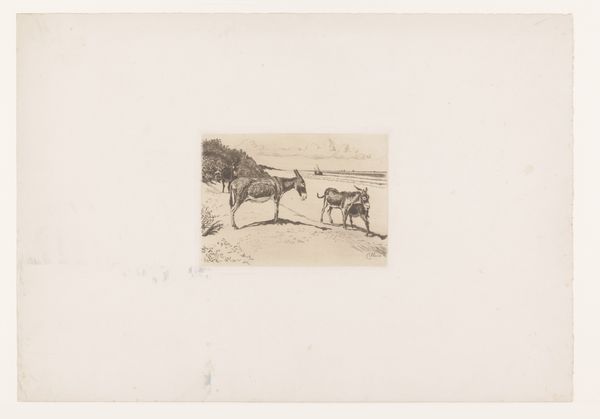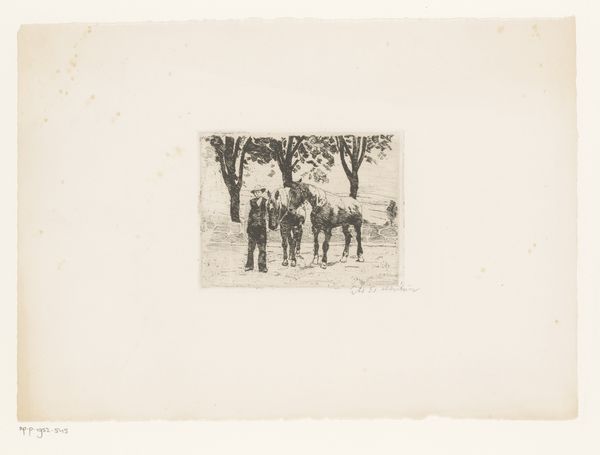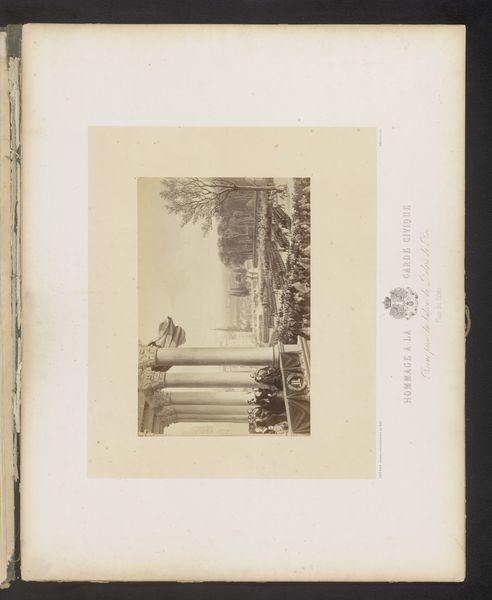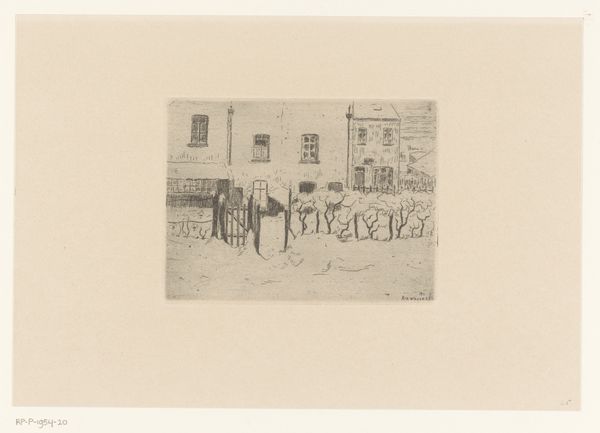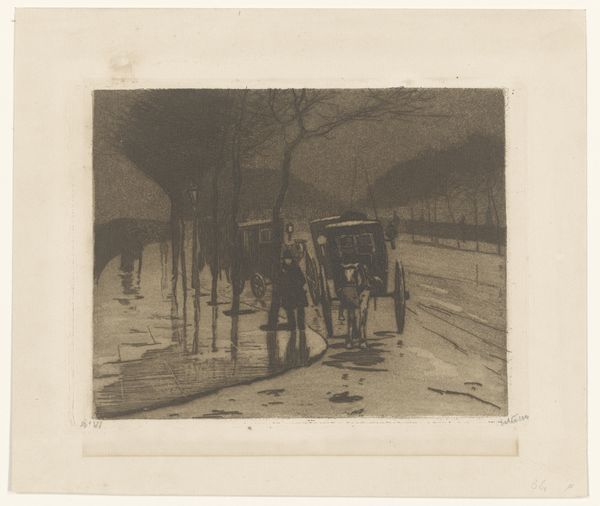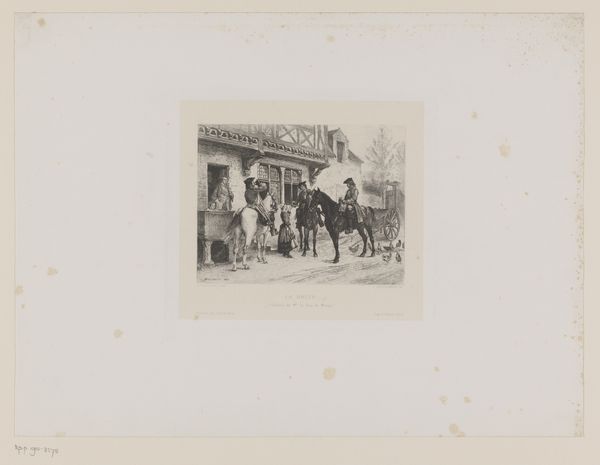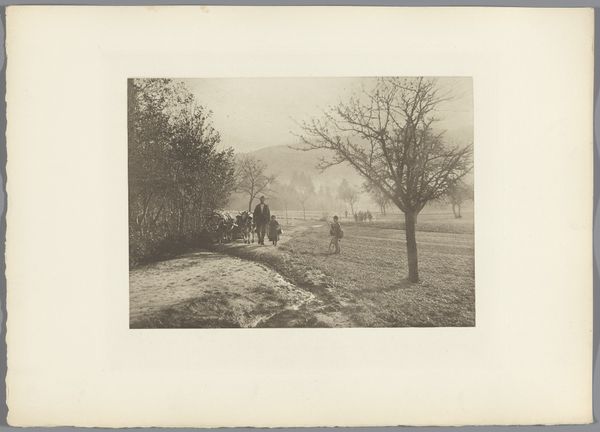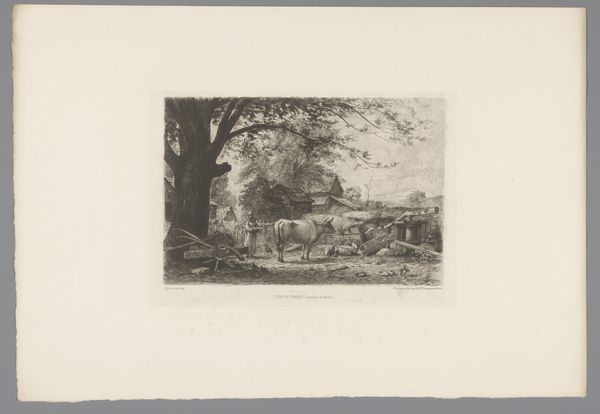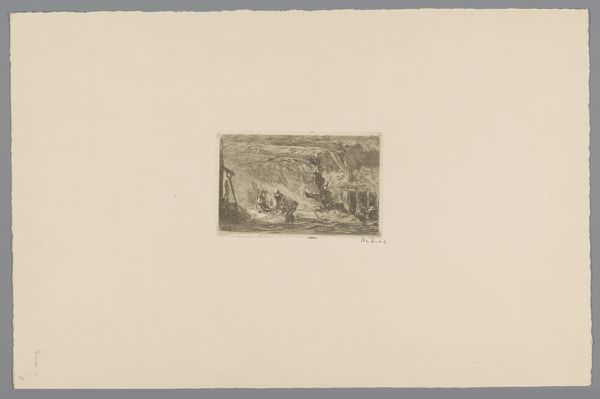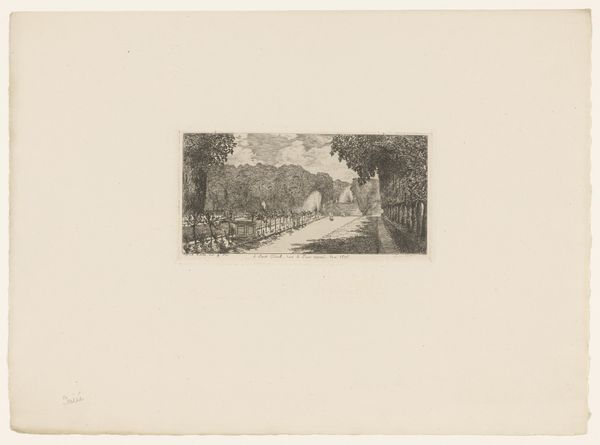
Wachtende rijtuigen op de Victoria Embankment in Londen c. 1890 - 1908
0:00
0:00
willemwitsen
Rijksmuseum
Dimensions: height 151 mm, width 202 mm
Copyright: Rijks Museum: Open Domain
Curator: This etching, entitled "Wachtende rijtuigen op de Victoria Embankment in Londen," or "Waiting Carriages on the Victoria Embankment in London," by Willem Witsen, dates from around 1890 to 1908. Editor: It's quite atmospheric. The tonality leans towards a rather melancholy key. The washes of grey produce this interesting flattening of pictorial space. Curator: The print medium lends itself well to such subtle gradations of tone. What draws my attention is the way Witsen uses line, the incisive strokes that define the carriages and figures creating a complex interplay of light and shadow, form and absence. Editor: True, and note how that starkness underscores the conditions for laborers— drivers exposed to the elements, reliant on unpredictable fares in an unforgiving climate. It makes you think about the labor involved; etching being physically and chemically intense, its direct relationship to that work, reflecting the rhythms of industrialized city life. Curator: You speak of rhythms, yes, consider how the trees on either side frame the vista, a clever formal device that pulls the eye back into the composition, and how that rhythm works contrapuntally with the tonal range, with all those greys working together to give the eye a space to find definition. The visual components all contribute to the piece's overall structural harmony. Editor: Well, it's a bleak beauty, rendered visible through laborious craft processes – a scene rooted in materiality, of weather, of transport, and of the print-making process itself. One can almost feel the rain. Curator: Indeed. And the genius of Witsen lies in distilling those ephemeral sensations into such a compelling visual schema. It makes one wonder about the broader visual landscape he constructs within this particular medium, doesn't it? Editor: Absolutely.
Comments
No comments
Be the first to comment and join the conversation on the ultimate creative platform.
